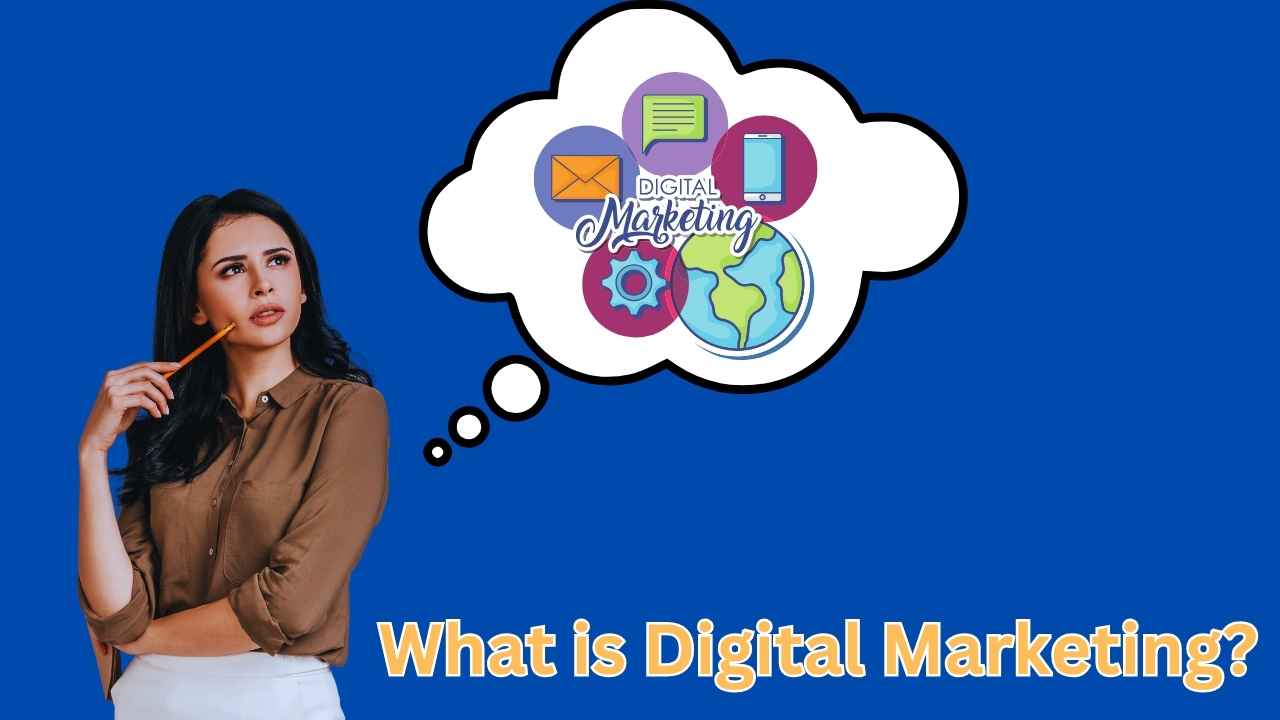
When digital marketing started, it was a game-changer, just like how we now rely on our smartphones for almost everything. Imagine a time before ads were everywhere on Google or Instagram. That sounds strange. That’s how the internet has evolved over the past few decades. The first digital ad appeared in 1994; we’ve come a long way.
Let’s look at when digital marketing started and how it evolved into today’s driving force.
What is Digital Marketing?

Digital marketing is a business campaign that is launched faster than traditional marketing campaigns. Through the Internet, products, services, or brands are introduced to people. Digital marketing can also be called online marketing. Products are promoted through email, social media marketing, and mobile apps.
Examples of Digital Marketing:
- Search Engine Optimization (SEO): Making a website appear higher in search results.
- Social media marketing means promoting a brand through platforms like Facebook, Instagram, etc.
- Email Marketing: Email customers to inform or encourage them to buy.
- Content Marketing: Creating useful or entertaining content to attract an audience.
- Pay-Per-Click (PPC) Advertising: Running ads where businesses pay for each click.
- Website Blogging and Affiliate Marketing: Writing blogs or promoting other products for commission.
- Online PR: Managing a brand’s image online.
- Video Marketing: Using video to advertise or inform about products.
- Website Marketing: Optimizing a website to improve user experience and sales.
The Birth of Digital Marketing
Digital marketing started in the early 1990s when the internet became more popular. The development of search engines, social media, and mobile apps drove this progress.
1991: The World Wide Web Goes Public
Tim Berners-Lee launched the World Wide Web in 1991, making the Internet available to everyone. This opened up new opportunities for businesses to connect with consumers online, although few people saw the marketing potential then.
1994: The First Web Ad
In 1994, the first web ad appeared on the internet, and a banner ad for AT&T on HotWired was the first commercial online magazine. This marked the beginning of digital advertising.
The Rise of Search Engines and Email Marketing (Late 1990s - Early 2000s)
Late 1990s: Email Marketing Gains Popularity
Email marketing started to gain popularity in the late 1990s. In 1996, Jeff Bezos sent Amazon’s very first promotional email. Since then, it has become a go-to way to promote products, services, and special offers.
The Boom of Digital Marketing in the 2000s
2000: Google AdWords
In 2000, Google launched AdWords, transforming digital marketing by allowing businesses to create pay-per-click (PPC) campaigns focused on keywords. This marked the beginning of paid search advertising.
2003-2004: The Rise of Social Media
In the mid-2000s, social media platforms became powerful marketing tools.
- LinkedIn (2003)
- Facebook (2004)
- MySpace (2003)
YouTube, founded in 2005, grew into the world’s largest video-sharing platform, making video marketing crucial for digital strategies.
Impact of YouTube on Marketing
- Short-Form Video Content
- Audience Engagement
- Content Variety
- SEO Benefits
- Call to Action (CTA)
- Brand Awareness and Personality
2006-2007: Google AdSense and Facebook Ads
From 2006 to 2007, Google AdSense became a new advertising platform. Displaying ads has become a new means of earning for website owners. The launch of Facebook Ads in 2007, which allowed marketers to target users based on personal information, sparked a digital revolution. Both platforms significantly increased the potential for small businesses and advertisers to reach vast audiences.
The 2010s: A Mobile-First and Data-Driven Era
In the early 2010s, the popularity of smartphones and mobile applications soared, establishing mobile marketing as an essential part of digital strategies. Around this time, Google introduced mobile search advertisements to reach users on their devices, leveraging the growing reliance on mobile internet access.
2012: The Rise of Influencer Marketing
Instagram quickly gained popularity in 2010 as a platform for sharing photos and videos. Influencer marketing has grown into a multi-billion dollar industry, with influencers on platforms like Instagram, YouTube, and TikTok becoming integral to brand strategies.
2015: Programmatic Advertising and Big Data
Programmatic advertising became widely adopted during the 2010s. This method streamlined the purchase of digital ads through automation using data and algorithms. It allowed marketers to efficiently target specific audience segments at scale, utilizing insights derived from extensive data sets.
The 2020s: The Age of AI, Personalization, and Privacy Concerns
Digital marketing will be very fast by 2020. However, now that personal experiences are increasingly emphasized, data privacy has significantly influenced the industry’s direction.
AI and Chatbots
Advanced technologies and data-driven algorithms have significantly impacted digital marketing. Interactive chat tools, in particular, have gained widespread popularity for delivering real-time customer support and assistance.
Personalization and Customer Experience
Modern innovations and algorithm-driven solutions have profoundly transformed digital marketing. Customer-focused chat systems, in particular, have become increasingly popular for immediate support and assistance.
Privacy and Data Protection
The General Data Protection Regulation (GDPR), implemented in the EU in 2018, marked a significant change in how companies handle customer data. It emphasizes the increasing importance of privacy and urges marketers to rethink their data collection methods.
Conclusion
Today, digital marketing content is a multifaceted industry that leverages platforms like TikTok, Instagram, and the metaverse alongside advanced personalization powered by AI and big data. This evolution is a direct response to consumer behavior and technological advances.










